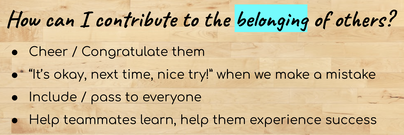 As kids around the world have sport opportunities taken away from them due to the COVID-19 pandemic. What I felt my ES students were struggling with most was not the loss of being physically active but rather the loss of belonging and/or identity that the activity has provided them. In planning for an upcoming Floor Hockey unit, I wondered if it was possible to recreate this sense of belonging and team atmosphere in our physical education class. A decade ago, I recall spending time during my undergrad learning about Seidentop's Sport Education (SE) model. If you're unfamiliar with the SE model, essentially this model aims to give a complete representation of the sporting experience and the various roles that make it possible. Teams are formed, who have their own unique cheers, logos etc. and students perform roles such as coach, manager, trainer, scorekeeper, referee etc. in addition to their participant roles. While the SE model has not been one I've utilized frequently, over the past few years as I dug deeper into the features of meaningful phys-ed, the SE model was repeatedly referenced as having positive correlations with social interaction/belonging as well as fun/enjoyment. If you're interested in reading more about it, the Complete Guide to Sport Education is a great resource. It is worth noting that in this unit I had not remained entirely faithful to SE model but rather modified elements in consideration of my context. In addition, as part of the Alberta Teaching Quality Standard (TQS), teachers must apply foundational knowledge of First Nations, Metis and Inuit communities to promote greater intercultural understanding and to acknowledge the strength and diversity of FNMI communities. Having taught the previous 8 years abroad, I had little understanding of how this is to be achieved (my perception is that it is commonly taught through a unit on FNMI Cultural Games or Dance). Taking all of this into consideration, my goals were to utilize the Sport Education model to engage students in a 8 Week (18 x 35minute lessons) Floor Hockey unit in which students would consider how they could contribute to the sense of belonging of others as well as develop a greater understanding of First Nations communities. To frame the unit, students would be competing for the Lacquette Cup, named after Brigette Lacquette - the first First Nations woman to compete for Canada's Women's Olympic Hockey Team. Bridgette grew up as a member of Cote First Nation, and as a young child participating in hockey was not always made to feel like she belonged as competitors would often make racially insensitive insults targeted towards her First Nation status. Through the encouragement of her father and her own persistence, Brigette continued to participate and went on to represent Canada at the 2018 Winter Olympics in Pyeongchang. In addition, while I did not engage students in discussion related to the gender inequality that exists in hockey, between the PWHL, NWHL and NHL etc. some of my students have already begun to see hockey as an activity for boys. With this in mind, I hoped using Brigette's story as a focus for the unit would also provide students with an example of a strong female athlete and draw more attention to the women's game. Lessons 1-4 These lessons were devoted to 'fun' floor hockey related activities designed to give students as much skill practice as possible. This included variations of common games such as British Bulldog, Sharks & Minnows, King Pin etc. This also allowed me time to complete a baseline assessment of each students skill level so I could ensure teams were evenly matched later on. During this time, 'inclusion' and 'belonging' were introduced and defined with each class. At the end of this introductory phase, students shared how they felt they might be able to contribute to the belonging of others. Lessons 5-10 During these lessons, students participated in small sided games with an emphasis placed on contributing positively to the belonging of others as stated above. We used a variety of tactical challenges/constraints such as defenseman and forwards being restricted to their half of the court and talked about reliance upon teammates. This time was also devoted to introducing the class to Brigette Lacquette and the challenges she faced from competitors who tried to make her feel like hockey was not a sport for her. The people of Cote First Nation were originally a group of Saulteaux people who settled in Saskatchewan near the Manitoba border. The Saulteaux are part of the Anishinnaabe culture who have 7 Sacred Teachings (love, humility, respect, courage, honesty, wisdom and truth) sometimes referred to as the 7 Grandfathers, which are to be applied in our daily lives. These 7 Teachings are also represented by animals, four of which, would serve as our teams for the Lacquette Cup. In their newly formed teams, students wrote on a handout how they could uphold the values of their animal during Floor Hockey (i.e. Buffaloes, how will you demonstrate respect throughout the tournament?) During the next lesson, students determined the roles for their team, which were listed below.
Lessons 11-12 These lessons were devoted to team skill-based practices 'Team Practices', where the stick-handling and passing coaches created drills for their teams (it was a lot of slow moving around pylons) and teams participated in exhibition games. During this time we also discussed what is often referred to in many First Nations cultures as the 'Medicine Wheel', and the importance of the circle in promoting equality. During tribal councils it is tradition to sit in a circle formation to represent the equality of power. Often, an 'object of power' or 'talking stick' is used, so that only the person holding the object is permitted to speak while others are active listeners. This was the purpose of our logo designers. The puck they designed would serve as the object of power for the teams sharing circle. At the end of each game, students would gather in their sharing circle and either discuss the prompts shared on the board or share something else they were feeling at the time. In comparison to small group strategies I would normally use, I hoped the addition of the talking object would create a greater sense of belonging amongst the team, with participants feeling their voice was heard, as opposed to vocal / experienced students dominating the conversation. Lessons 13 - 15 (Round Robin) Students participated in a 4 Team Round Robin, playing one team each day. Prior to beginning the tournament, students created a team cheer that they would perform before the start of each game. At the conclusion of each game as part of the sharing circle, students would complete an assessment relating to sportsmanship and inclusion.
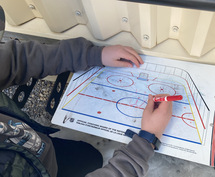 Lesson 16-17 (Playoffs) As we drew closer to the championship, students were becoming increasingly excited, eager but also nervous at the same time. Outside at recess one day, I found a student (right) who had brought his dad's coaching board to school and was laying out the 'winning' strategy for his teammates. However, a couple of their classroom teachers mentioned that a few students had a difficult time coping with losing. With this in mind, before the single-elimination playoff began we watched a clip from the gold medal game at the Pyeongchang Olympics (a game I was fortunate to be at). After winning gold for 4 consecutive Olympics, Canada goes to sudden-victory shootout against Team USA. I set the scene with a few slides and then clipped to together the video of the final shooters for both teams. Spoiler Alert - Canada loses. I found the Olympic footage from the game and clipped together the reactions of the Canadian players (upset, but respectful) and we had class discussion about how to lose gracefully and maintain composure in difficult situations. It was a timely lesson, as a couple of the semi-final match ups went to overtime, there were tears, but the students did maintain their composure and congratulated their opponents on the victory. 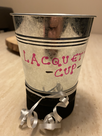 Eventually, the champions were crowned, and the students were excited about being able to keep a physical 'Lacquette' Cup (made of a tin cup from Dollarama with a base of 2 hockey pucks) in their classes. Wrap Up The day after the championships concluded, students gathered in their last sharing circle and shared what they were proud of (as an individual or a team), memorable moments etc. We conclude with an 'All-Star' game, which was just random teams. We spoke about the spirit of the All-Star game as being non-competitive and a celebration of achievements. At the conclusion of the game, we reviewed what we had learned about inclusion and belonging and why we should never treat people the way Brigette was treated as a kid. Of course, when there are notable events in professional sports, they often appear on Sportscenter. Using a green screen and some clips from the games, I put together a short Sportscenter video which was shared on the school-wide morning announcements.
0 Comments
Leave a Reply. |
AuthorWrite something about yourself. No need to be fancy, just an overview. Archives
November 2023
Categories |

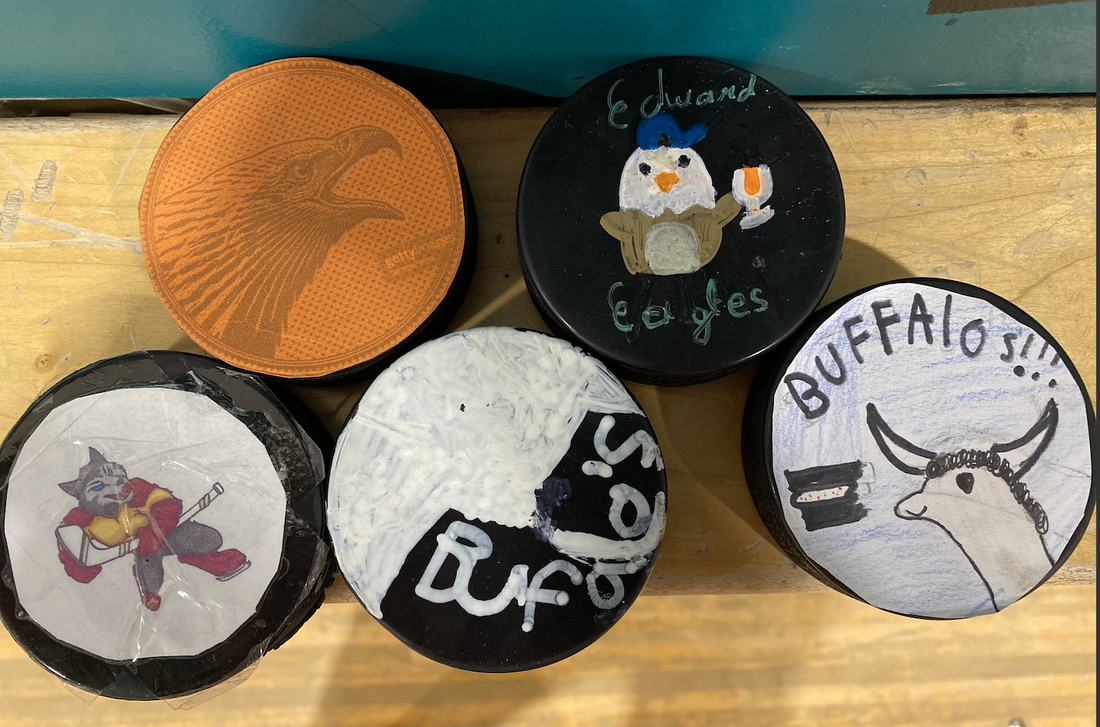
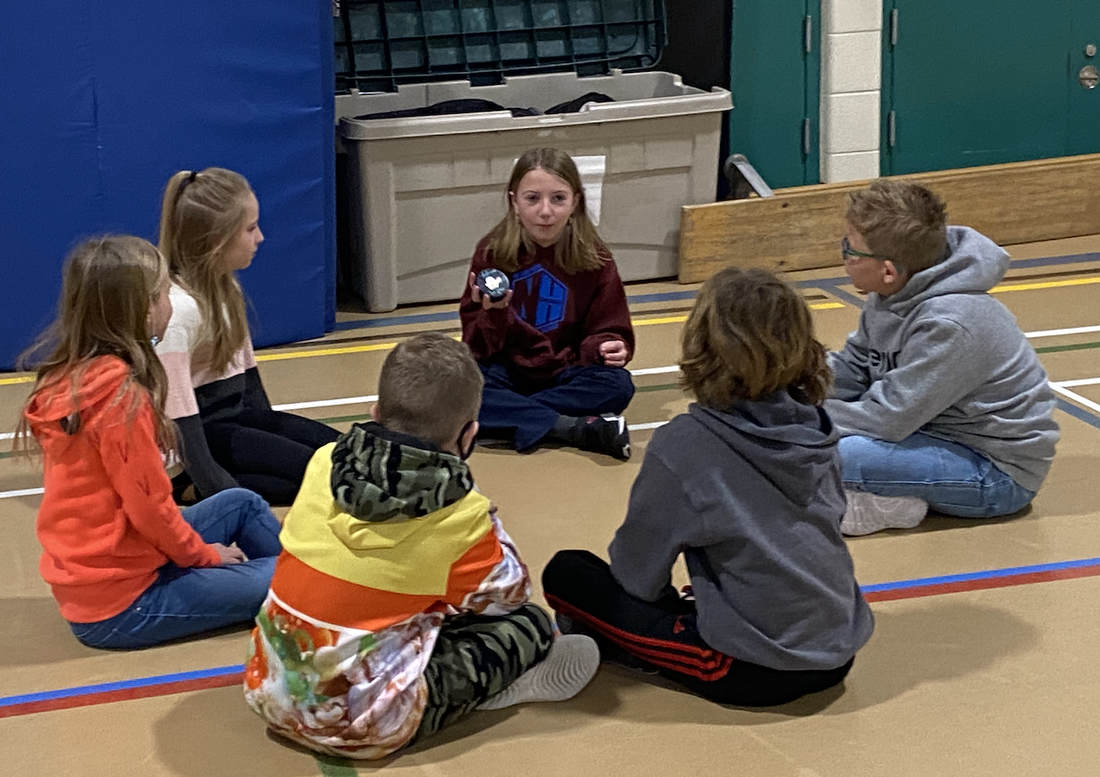
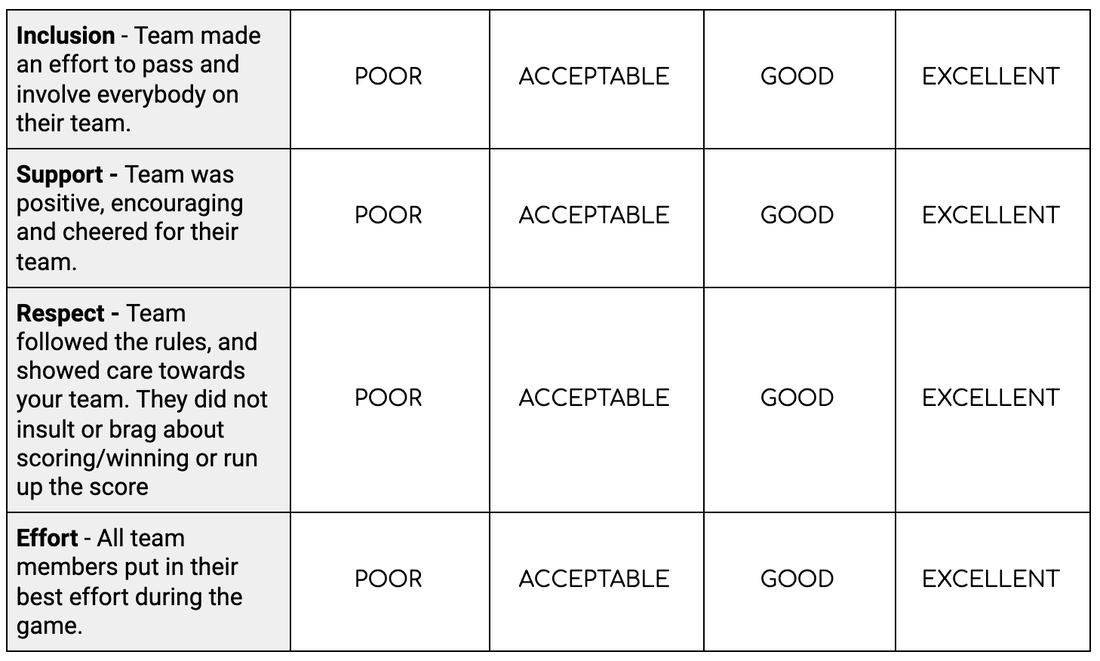
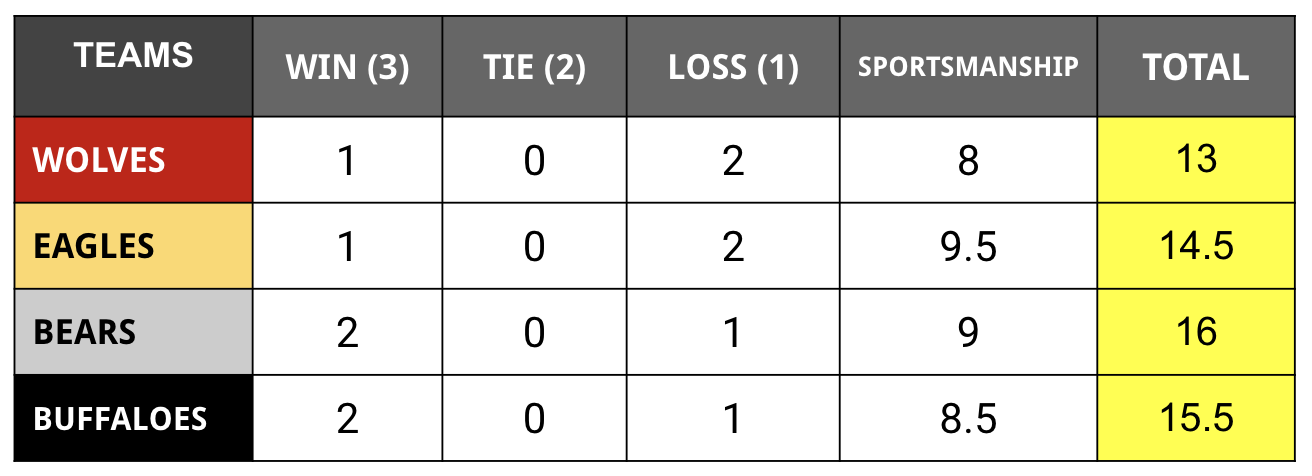
 RSS Feed
RSS Feed
